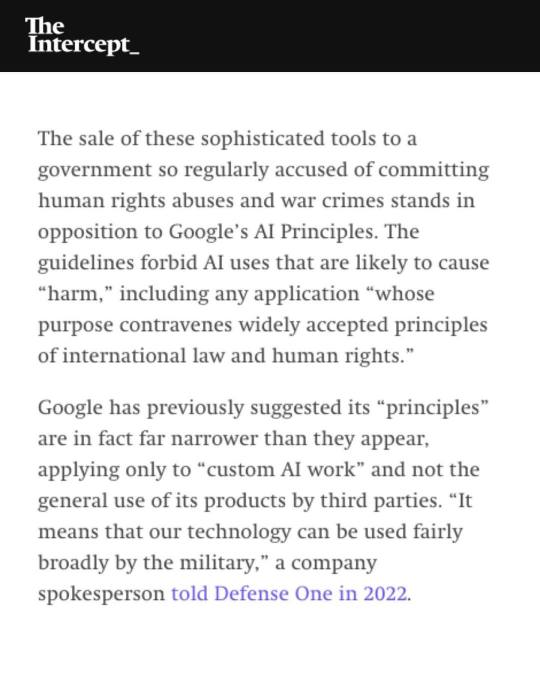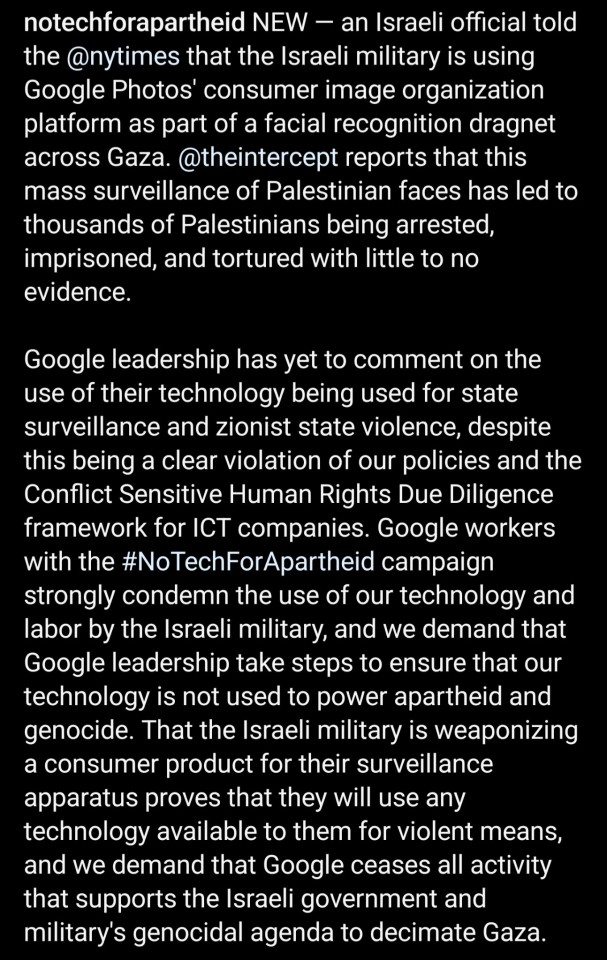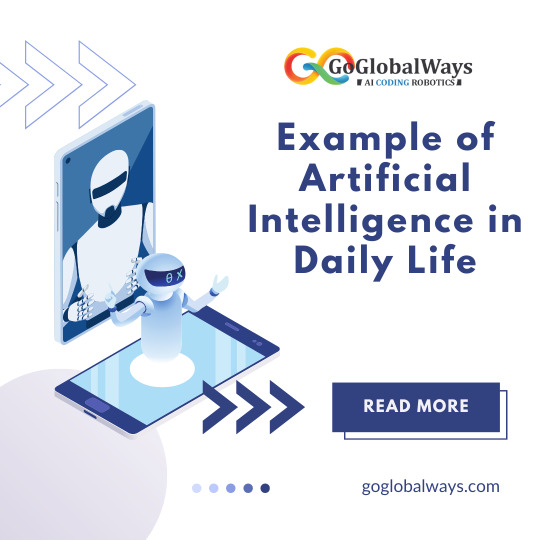#google facial recognition system
Text










#facial recognition#facial recognition software#boycott israel#boycott google#google software is being used to help target and kill Palestinians#google#apartheid#save palestine#ethnic cleansing#israel is an apartheid state#seek truth#free palestine 🇵🇸#genocide#illegal occupation#israel is committing genocide#israeli war crimes#project nimbus#google photos#israeli hit list#israeli war criminals#israel is a terrorist state#surveillance state#mass surveillance#even AI is racist with facial recognition systems being notoriously unrealiable for people with darker skin tones#no tech for apartheid#human rights violations#conflict sensitive human rights due diligence#seems like that can be bypassed if the money is good enough#dystopian nightmare
32 notes
·
View notes
Text
Twitter Blue Tests Verification With Government ID and Selfie
X (the social media site formerly known as Twitter) is in the process of launching a new identity verification feature that could prove controversial. The feature, which is currently only offered to/forced on premium “Blue” subscribers, asks users to fork over a selfie and a picture of a government issued ID to verify that they are who they say they are.
Mr. Tweet Fumbles Super Bowl Tweet
The…

View On WordPress
#Biometrics#Computer access control#Elon Musk#Facial recognition system#Gizmodo#Google#ID.me#Identity document#Identity management#Identity verification service#Internet#Internet privacy#Microsoft#Musk#Nima Owji#PAYPAL#Surveillance#Technology#twitter#Uber#Verification
0 notes
Text
🚨 Euro-Mediterranean Human Rights Monitor:
—
The involvement of technology and social media companies in causing the killing of civilians by "israel" in the Gaza Strip necessitates an immediate investigation.
These companies should be held accountable and liable if their complicity or failure to exercise due diligence in preventing access to and exploitation of their users’ private information is proven, obligating them to ensure their services are not misused in war zones and that they protect user privacy.
"Israel" uses various technology systems supported by artificial intelligence, such as Gospel, Fire Factory, Lavender, and Where’s Daddy, all operating within a system aimed at monitoring Palestinians illegally and tracking their movements.
These systems function to identify and designate suspected individuals as legitimate targets, based mostly on shared characteristics and patterns rather than specific locations or personal information.
The accuracy of the information provided by these systems is rarely verified by the occupation army, despite a known large margin of error due to the nature of these systems' inability to provide updated information.
The Lavender system, heavily used by the occupation army to identify suspects in Gaza before targeting them, is based on probability logic, a hallmark of machine learning algorithms.
"Israeli" military and intelligence sources have admitted to attacking potential targets without consideration for the principle of proportionality and collateral damage, with suspicions that the Lavender system relies on tracking social media accounts among its sources.
Recently, "israel's" collaboration with Google was revealed, including several technological projects, among them Project Nimbus which provides the occupation army with technology that facilitates intensified surveillance and data collection on Palestinians illegally.
The occupation army also uses Google's facial recognition feature in photos to monitor Palestinian civilians in the Gaza Strip and to compile an "assassination list," collecting a vast amount of images related to the October 7th operation.
The Euro-Mediterranean field team has collected testimonies from Palestinian civilians directly targeted in Israeli military attacks following their activities on social media sites, without any involvement in military actions.
The potential complicity of companies like Google and Meta and other technology and social media firms in the violations and crimes committed by "israel" breaches international law rules and the companies' declared commitment to human rights.
No social network should provide this kind of private information about its users and actually participate in the mass genocide conducted by "israel" against Palestinian civilians in Gaza, which demands an international investigation providing guarantees for accountability and justice for the victims.
#meta#google#alphabet#social media#instagram#ai#machine learning#palestine#free palestine#gaza#free gaza#jerusalem#israel#tel aviv#gaza strip#from the river to the sea palestine will be free#joe biden#benjamin netanyahu#news#breaking news#gaza news#genocide#palestinian genocide#gaza genocide#human rights#social justice#surveillance#iof#idf#israeli terrorism
21 notes
·
View notes
Text
Oh! Fun (not really) HC I've been thinking about for a little bit: the main reason the animatronics attack people when in virus mode isn't just because they're being partially controlled by Vanny/Afton's influence, but because they physically cannot recognize anyone or anything around them.
Their eyesight is (literally) AI-generated.
A bit more of an in-depth explanation below the cut:
So, how I see it, the animatronics don't have actual eyesight (obviously). What they do have is an approximate map of where everything is in the Pizzaplex programmed into their eyes to simulate what it's like walking around the space. Like a virtual housing tour meets Google Maps, only much smoother and more accurate. (The V.A.N.N.Y. layout is also programmed in, and is how Roxanne can see through walls/how the animatronics can still react to things seen "out of barriers").
When the virus kicks in, everything sort of becomes...fuzzy and unrecognizable. Like this image:

There's a part of them that knows they should be able to recognize the places around them, but for some reason, they just can't.
And it's the same for faces. Their facial recognition software cannot identify whoever they're looking at because the person's facial structure is always constantly morphing and shifting (7:15 in the video below for a good example of what I mean):
youtube
Pre-DLC, this could be why previous human employees are being killed/harmed, because at some point or another the virus wipes the robot's ability to recognize who is approaching them, and their system deems them a threat. (I imagine it's particularly bad for Monty.) It also explains why none of them seem to notice or care about Vanny's presence in the 'Plex, because the virus is messing with their ability to see what is and isn't beyond the "barriers" in their system-generated eyesight. (Why can Gregory see her? I have no idea! Don't think about it too hard.)
Post-DLC, it kind of explains why Sun thinks Cassie is a mechanic at first, because his system can only recognize the V.A.N.N.Y. mask, but once she takes it off, Eclipse is only vaguely aware that she is a child who is somewhere she shouldn't be, without being able to seemingly recognize what a horrible state they or the Daycare is actually in (He just needs to clean up, right? And then the kids will be back soon!). It could also be why Roxanne mistook Cassie as Gregory at first.
It's why the animatronics have trouble recognizing their surroundings, getting around the Pizzaplex, or even realizing what sort of state it/they are currently in. They're just stuck in an endless void of constantly shifting colors, moving shapes, and distorted faces.
#fnaf#five nights at freddy's#security breach#fnaf security breach#fnaf sb#headcanons#thanks for coming to my fred talk#long post#i've been thinking about this for a while#i also have a very sad hc about chica#sfw#angst#i hope this posts correctly#video#uhhh#flashing images#for the lh video ref#it's so uncanny#but exactly how i imagine their facial recognition software works#i am bad at explaining things
21 notes
·
View notes
Text


Sen. Ed Markey (D-Mass.) sent a letter Tuesday to the Department of Homeland Security (DHS) urging it to discontinue the use of a smartphone app required by migrants seeking asylum at the southern border to use.
The CBP One app, which was rolled out in 2021, was established to allow migrants to submit applications for asylum before they cross the U.S. border. Markey said in his letter that requiring migrants to submit sensitive information, including biometric and location data, on the app raises “serious privacy concerns,” and demanded that the DHS cease its use of it.
“This expanded use of the CBP One app raises troubling issues of inequitable access to — and impermissible limits on — asylum, and has been plagued by significant technical problems and privacy concerns. DHS should shelve the CBP One app immediately,” Markey said in his letter.
“Rather than mandating use of an app that is inaccessible to many migrants, and violates both their privacy and international law, DHS should instead implement a compassionate, lawful, and human rights centered approach for those seeking asylum in the United States,” he continued.
He said that the use of this technology has also faced technical problems, including with its facial recognition software misidentifying people of color.
“Technology can facilitate asylum processing, but we cannot allow it to create a tiered system that treats asylum seekers differently based on their economic status — including the ability to pay for travel — language, nationality, or race,” he said.
The app has negative ratings on both the Google Play and Apple app stores, with many users criticizing the app for crashing and other technical issues.
(continue reading)
#politics#ed markey#immigration#asylum seekers#joe biden#cbp one app#dhs#privacy rights#surveillance state#facial recognition
54 notes
·
View notes
Text
also, bc I’m seeing a lot of people posting transition timelines…
be *very* wary of putting your face on social media, ESPECIALLY b&a transition timeline pics. if your posts can be found on Google/seen without logging in, they can be scraped by facial recognition bots and fed into databases like ClearviewAI (which is only the most publicized example, there *are* others.) law enforcement is increasingly collaborating with the private sector in the facial recognition technology field i.e. the systems being deployed by big box stores to deter theft are also available to law enforcement, and “hits” from those systems can be cross-referenced with other systems like drivers license databases and the facial recognition system deployed by CBP along interstate highways along the southern border.
in this day and age where trans existence is increasingly becoming criminalized it is more important than ever that we not enable our own electronic persecution. fight back, make noise, but be smart and use caution when it comes to your identity. don’t put your face on the internet, make sure your social media posts don’t contain personally identifying information (like talking about your job, partners, where you live, etc.) and ALWAYS WEAR A MASK IN PUBLIC.
11 notes
·
View notes
Text
Urgent need to investigate role of technology, social media companies in killing Gazan civilians

Palestinian Territory – The role of major technology companies and international social media platforms in the killing of Palestinian civilians during Israel’s genocidal war against the Gaza Strip, ongoing since 7 October 2023, must be investigated. These companies need to be held accountable if found to be complicit or not to have taken adequate precautions to prevent access to, and exploitation of, users’ information. They must ensure that their services are not used in conflict zones and that their users’ privacy is respected.
There are frequent reports that Israel uses a number of artificial intelligence-supported technological systems, including Where’s Daddy?, Fire Factory, Gospel, and Lavender, to illegally track and monitor Palestinians. These systems are able to identify possible suspectsand classify them as legitimate targets based on potentially relevant information that is typically unrelated to the location or individual in question, by looking for similarities and patterns among all Gaza Strip residents, particularly men, and among members of armed factions.
Studies have shown that, although they are aware of a significant margin of error due to the nature of theseoperating systems and their inability to provide accurate information—particularly with regard to the whereabouts of those placed on the targeting list in real time—the Israeli army usually does not verify the accuracy of the information provided by these systems.
For example, Israel’s army uses the Lavender system extensively to identify suspects in the Strip before targeting them; this system intentionally results in a high number of civilian casualties.
The Lavender system uses the logic of probabilities, which is a distinguishing characteristic of machine learning algorithms. The algorithm looks through large data sets for patterns that correspond to fighter behaviour, and the amount and quality of the data determines how successful the algorithm is in finding these patterns. It then recommends targets based on the probabilities.
With concerns being voiced regarding the Lavendersystem’s possible reliance on tracking social media accounts, Israeli military and intelligence sources have acknowledged attacking potential targets without considering the principle of proportionality or collateral damage.
These suspicions are supported by a book (The Human Machine Team) written by the current commander of the elite Israeli army Unit 8200, which offers instructions on how to create a “target machine” akin to the Lavender artificial intelligence system. The book also includes information on hundreds of signals that can raise the severity of a person’s classification, such as switching cell phones every few months, moving addresses frequently, or even just joining the samegroup on Meta’s WhatsApp application as a “fighter”.
Additionally, it has been recently revealed that Google and Israel are collaborating on several technology initiatives, including Project Nimbus, which provides the Israeli army with tools for the increased monitoring and illegal data collection of Palestinians, thereby broadening Israeli policies of denial and persecution, plus other crimes against the Palestinian people. This project in particular has sparked significant human rights criticism, prompting dozens of company employees to protest and resign, with others being fired over their protests.
The Israeli army also uses Google Photos' facial recognition feature to keep an eye on Palestinian civilians in the Gaza Strip and create a “hit list”. It gathers as many images as possible from the 7 October event, known as Al-Aqsa Flood, during which Palestinian faces were visible as they stormed the separation fence and entered the settlements. This technology is then used to sort photos and store images of faces, which resulted in the recent arrest of thousands of Palestinians from the Gaza Strip, in violation of the company’s explicit rules and the United Nations Guiding Principles on Business and Human Rights.
The Euro-Med Monitor field team has documentedaccounts of Palestinian civilians who, as a consequence of their social media activity, have been singled out as suspects by Israel, despite having taken no military action.
A young Palestinian man who requested to beidentified only as “A.F.” due to safety concerns, for instance, was seriously injured in an Israeli bombing that targeted a residential house in Gaza City’s Al-Sabra neighbourhood.
The house was targeted shortly after A.F. posted a video clip on Instagram, which is owned by Meta, in which he joked that he was in a “field reconnaissance mission”.
His relative told Euro-Med Monitor that A.F. hadmerely been attempting to mimic press reporters when he posted the brief video clip on his personal Instagram account. Suddenly, however, A.F. was targeted by an Israeli reconnaissance plane while on the roof of the house.
A separate Israeli bombing on 16 April claimed the lives of six young Palestinians who had gathered to access Internet services. One of the victims was using a group chat on WhatsApp—a Meta subsidiary—to report news about the Sheikh Radwan neighbourhood of Gaza City.
The deceased man’s relative, who requested anonymity due to safety fears, informed Euro-Med Monitor that the victim was near the Internet access point when thegroup was directly hit by a missile from an Israeli reconnaissance plane. The victim was voluntarily sharing news in family and public groups on the WhatsApp application about the Israeli attacks and humanitarian situation in Sheikh Radwan.
The Israeli army’s covert strategy of launching extremely damaging air and artillery attacks based on data that falls short of the minimum standard of accurate target assessment, ranging from cell phone records and photos to social media contact and communication patterns, all within the larger context of an incredibly haphazard killing programme, is deeply concerning.
The evidence presented by global technology experts points to a likely connection between the Israeli army’s use of the Lavender system—which has been used to identify targets in Israel’s military assaults on the Gaza Strip—and the Meta company. This means that the Israeli army potentially targeted individuals merely for being in WhatsApp groups with other people on the suspect list. Additionally, the experts question how Israel could have obtained this data without Meta disclosing it.
Earlier, British newspaper The Guardian exposed Israel’s use of artificial intelligence (Lavender) to murder a great number of Palestinian civilians. The Israeli military used machine learning systems to identify potential “low-ranking” fighters, with the aim of targeting them without considering the level of permissible collateral damage. A “margin of tolerance”was adopted, which allowed for the death of 20 civilians for every overthrown target; when targeting “higher-ranking fighters”, this margin of tolerance allowed for the death of 100 people for every fighter.
Google, Meta, and other technology and social media companies may have colluded with Israel in crimes and violations against the Palestinian people, including extrajudicial killings, in defiance of international law and these companies’ stated human rights commitments.
Social networks should not be releasing this kind of personal data about their users or taking part in the Israeli genocide against Palestinian civilians in the Gaza Strip. An international investigation is required in order to provide guarantees of accountability for those responsible, and justice for the victims.
Meta’s overt and obvious bias towards Israel, itssubstantial suppression of content that supports the Palestinian cause, and its policy of stifling criticism of Israel's crimes—including rumours of close ties between top Meta officials and Israel—suggest the company’s plausible involvement in the killing of Palestinian civilians.
Given the risks of failing to take reasonable steps to demonstrate that the objective is a legitimate one under international humanitarian law, the aforementionedcompanies must fully commit to ending all cooperation with the Israeli military and providing Israel with access to data and information that violate Palestinian rights and put their lives in jeopardy.
Israel’s failure to exercise due diligence and considerhuman rights when using artificial intelligence for military purposes must be immediately investigated, as well as its failure to comply with international law and international humanitarian law.
These companies must promptly address any information that has been circulating about their involvement in Israeli crimes against the Palestinian people. Serious investigations regarding their policies and practices in relation to Israeli crimes and human rights violations must be opened if necessary, and companies must be held accountable if found to be complicit or to have failed to take reasonable precautions to prevent the exploitation of userinformation for criminal activities.
#free Palestine#free gaza#I stand with Palestine#Gaza#Palestine#Gazaunderattack#Palestinian Genocide#Gaza Genocide#end the occupation#Israel is an illegal occupier#Israel is committing genocide#Israel is committing war crimes#Israel is a terrorist state#Israel is a war criminal#Israel is an apartheid state#Israel is evil#Israeli war crimes#Israeli terrorism#IOF Terrorism#Israel kills babies#Israel kills children#Israel kills innocents#Israel is a murder state#Israeli Terrorists#Israeli war criminals#Boycott Israel#Israel kills journalists#Israel kills kids#Israel murders innocents#Israel murders children
5 notes
·
View notes
Text
Ultrasounds, mens deodorant, rainwear fetish, mewing, slugging, hair growth subliminals, edible flowers, sunbathing, glowsticks, push pops, beer, data storage, light pollution, kahlua, hotel shampoo and conditioner, clem creevy, silver tooth, math rock, wetlands, ringtones, dubstep, upcycling, boxing, spiral dynamics, the rainbow serpent, low pressure systems, terrariums, broken nail, slam poetry, sequins, power tools, depth perception, blood loss, carpet burn, atheism, hot tubs, placenta, cicada shells, aeroguard, racecars, Ma Anand sheela, public pools, conspiracy theories, sacred geometry, bioterrorism, pissing in the shower, gunshots, rosehip tea, andy lee, dermatillomania, trepanation, crystal skulls, stealth, warheads, algae blooms, sensory deprivation chambers, singing, the sky, softcore porn, my head, blood, shark culling, cognitive dissonance, second cousins, ringing cedars anastasianism, tinsel, olive oil, codes and ciphers, petrol, tricks, hacks, tripe, nutribullet, slasher movies, the present, cancel culture, circumstances, mud, browbone, saliva, stage fright, plastic, dermarollers, chewing hair, littering, long car rides, zumba, prayer, minecraft, spatial disorientation, art deco lamps, emojis, saunas, constellations, facial recognition, memory loss, chiropractic, yahweh, canberra, cellulite, seafoam green, earthquakes, cuticle pushers, fresh air, sternum, sugar motta, christmas lights, sneezing, van halen, ink poisoning, vampire diaries, pine needles, hawaiian glam metal, glow worms, beatboxing, crack pipe, home birth, night lights, high pony tails, public school, smiling at people, dinosaurs, cheerleading, souvenir shops, dance concerts, feng shui, farms, time loop movies, soccer tape, aromatherapy, bird’s nests, iview, dragonfruits, phosphenes, gut shots, alchemy, Pangea, aquaculture, tar, glock, finches, ibiza, the 52hz whale, fruit ninja, tinnitus, crying spells, silphium, cardiophilia, relapsing, the garden, hexagramatron, sherbet, schi💋ophrenia, headstands, the summa, quantum wealth codes, google translate prophecies, cheer mixes, burnt toast, school disco’s
86 notes
·
View notes
Text

Personally, I think the AI is misjudged. As always, there is far too much hype about something that is currently only about beta testers in many areas. Namely, a herd of voluntary users who optimize the incomplete product free of charge for the tech giants. Click workers for free.
Dangers yes but first open the Pandora's box and let it run and then talk about ethical principles. But only talk and warn not implement. Whether only nuclear energy or chemical weapons to bio weapons first make and then look.
The same problem happens again, we are simply not capable of learning whether only genetic manipulation or AI we run after the progression because it could be another faster.
Ultimately, it is the great challenge which will bring about an entire social transformation. That will be so drastic that no area of life remains untouched.
All this takes place without restrictions and any ethical basis. It leads us not into the as always promised paradisiacal future but into the irresponsibility of the individual. And the loss of control of the individual against the AI system owners. By the way, who does not know the real satirical slogan atomic energy make electricity cheaper for all, from the sixties,
Today, a soldier sits at the trigger of a killer drone and must make a decision or a higher level of responsibility in the Relationship of dependence makes this decision with the consequence of responsibility.
But what then? The drone has an independent AI and decides without final consideration.
China is a special example to the loss of control of the people by a regulative and punishing state AI with evaluations system around the maximum control to receive.
At some point, the wolf will no longer have to monitor the sharp, but they will do everything not to attract the wolf's attention. The independent curtailment of freedom with the scissors ✂️ in the head.
Just to info the entire use is not climate neutral!
For example only Google without all the other options in the Internet.
Since Google currently processes up to nine billion search queries per day. If every Google search used AI, it would require about 29.2 terawatt hours of electricity per year, according to calculations. That would be equivalent to Ireland's annual electricity consumption.
I do not believe in help systems that filter my world and use my data for the self-interest of a few. In the end, the whole thing is just a crappy licensing system to sell surveillance products.
For example, why does facial recognition AI software need to recognize everyone to protect society?
Isn't it enough just to search for the people who are criminals and are wanted by court order!
All those the software does not recognize are irrelevant, thus false negatives.
However, it is not so you want to be able to judge whether someone is suspicious and perhaps criminal or even terrorist is on the road.
.
But this is error-prone and thus antisocial and dangerous.
If someone sweats at the airport and has anger in his face, this means an error assessment if it goes wrong. If one would be a terrorist, one injects Botox and has no anger and no hatred in the face but only the indifference of a misguided person whose act can only be resolved in retrospect. The more data you have to analyze, the longer the analysis takes. So why make the pile of straws bigger when you are only looking for the pins. Is my question!
mod
#ai generated#freedom of expression#freedom of speech#freedom#ai is stupid#ai is not our friend#responsibility#algorithm#ai don't dream#ai art generator#vs#reality#real horror#climate crisis#climate change
2 notes
·
View notes
Text
Smart Lock Box: Revolutionizing Security and Convenience
In the era of ever-advancing technology, our lives have become increasingly interconnected and automated. One such innovation that has gained widespread popularity is the smart lock box. This cutting-edge device is revolutionizing the way we secure our belongings and provides unparalleled convenience. In this article, we will analyze the multiple perspectives of smart lock boxes and explore their impact on security, accessibility, and user experience.
Security:
One of the primary reasons for the growing popularity of smart lock boxes is their ability to enhance security. Traditional lock boxes often rely on physical keys or combination codes, which can be lost or easily deciphered. Smart lock boxes, on the other hand, utilize advanced encryption algorithms and biometric authentication, such as fingerprint recognition or facial recognition, to ensure only authorized individuals can access the contents. This significantly reduces the risk of theft or unauthorized entry, providing peace of mind for homeowners, businesses, and even vacation rental owners.

User Experience:
The user experience provided by smart lock boxes is another aspect worth considering. Traditional lock boxes often require users to memorize complex codes or carry additional keys, leading to inconvenience and potential security risks if lost or stolen. Smart lock boxes eliminate these hassles by offering intuitive interfaces and user-friendly mobile applications. Users can easily manage access permissions, track entry logs, and receive real-time notifications on their smartphones. This seamless integration of technology enhances the overall user experience and simplifies the management of access to the lock box.
Integration with Smart Home Systems:
Smart lock boxes are also compatible with smart home systems, allowing for seamless integration and enhanced functionality. Integration with voice assistants, such as Amazon Alexa or Google Assistant, enables users to control the lock box through voice commands. Furthermore, integration with security cameras and motion sensors can trigger automatic locking or unlocking based on pre-defined rules, further enhancing security and convenience.
Conclusion:
Smart lock boxes have revolutionized security and convenience in various settings, from residential homes to rental properties and businesses. By combining advanced encryption technologies, remote accessibility, and seamless integration with smart home systems, these devices provide a comprehensive solution for secure and convenient access management. As technology continues to advance, we can expect smart lock boxes to become an essential component of our increasingly interconnected lives.
1 note
·
View note
Text
THE ISRAELI SECURITY state has for decades benefited from the country’s thriving research and development sector, and its interest in using AI to police and control Palestinians isn’t hypothetical. In 2021, the Washington Post reported on the existence of Blue Wolf, a secret military program aimed at monitoring Palestinians through a network of facial recognition-enabled smartphones and cameras.
“Living under a surveillance state for years taught us that all the collected information in the Israeli/Palestinian context could be securitized and militarized,” said Mona Shtaya, a Palestinian digital rights advocate at 7amleh-The Arab Center for Social Media Advancement, in a message. “Image recognition, facial recognition, emotional analysis, among other things will increase the power of the surveillance state to violate Palestinian right to privacy and to serve their main goal, which is to create the panopticon feeling among Palestinians that we are being watched all the time, which would make the Palestinian population control easier.”
The educational materials obtained by The Intercept show that Google briefed the Israeli government on using what’s known as sentiment detection, an increasingly controversial and discredited form of machine learning. Google claims that its systems can discern inner feelings from one’s face and statements, a technique commonly rejected as invasive and pseudoscientific, regarded as being little better than phrenology. In June, Microsoft announced that it would no longer offer emotion-detection features through its Azure cloud computing platform — a technology suite comparable to what Google provides with Nimbus — citing the lack of scientific basis.
8 notes
·
View notes
Text
Smartening Up Your Security: AI-Powered Devices for a Safer Home

Smartening Up Your Security: AI-Powered Devices for a Safer Home
Feeling a bit vulnerable in your own castle? In today's tech-driven world, fortifying your home security doesn't just involve beefing up the locks. A new breed of security devices powered by artificial intelligence (AI) is emerging, offering a smarter and more proactive approach to safeguarding your home. Let's explore some of these AI-powered options readily available for purchase online.
Gone are the days of static security cameras offering grainy footage. AI-powered security cameras are revolutionizing home surveillance. These cameras use complex algorithms to differentiate between genuine threats and harmless movements. Imagine a camera that can tell the difference between a leaf blowing in the wind and a person approaching your door – precious peace of mind, especially for those with skittish pets or overactive imaginations.
Some AI cameras even boast facial recognition capabilities. These can be pre-programmed to recognize trusted individuals, like family members or regular visitors. When someone unfamiliar approaches your property, you'll receive an instant notification, allowing you to take appropriate action. Facial recognition technology can also be helpful for identifying suspicious activity, providing valuable footage for law enforcement if needed.
Always Watching, But Not Creepy: Motion Sensors and Night Vision
AI-powered motion sensors take home security a step further. These intelligent devices can distinguish between a human presence and a small animal scurrying through your backyard. This reduces false alarms, those ear-splitting shrieks that send you scrambling for the off switch only to find a rogue squirrel setting off the system.
Night vision capabilities are also being enhanced with AI. These cameras can filter out background noise and provide clear visuals even in low-light conditions. This allows you to see exactly what's happening around your property, even on the darkest nights.
Smart speakers with AI assistants like Amazon Alexa or Google Assistant can be integrated into your home security system. Imagine being able to remotely arm or disarm your security system with a simple voice command. These speakers can also be programmed to work with other smart home devices, like smart locks or lights. For instance, you could set up a routine where your lights automatically turn on and your security system disarms when your voice is recognized, creating a seamless and personalized security experience.
AI is making its way to your doorstep as well. Smart video doorbells use built-in cameras and two-way audio communication to allow you to see and speak to visitors remotely. Imagine receiving a notification on your phone whenever someone rings your doorbell, whether you're relaxing on the couch or halfway across the world. Two-way audio allows you to converse with visitors, deterring potential package thieves or unwanted solicitors.
Some smart video doorbells even come with facial recognition capabilities, allowing you to identify visitors before you even answer the virtual door. Video locks add another layer of security. These high-tech locks can be controlled remotely using your smartphone and eliminate the need for physical keys. They can also be programmed to grant access to specific individuals using facial recognition or pre-generated codes.
While AI-powered security devices offer a plethora of benefits, there are some considerations. The upfront cost of these devices can be higher compared to traditional security systems. Additionally, some AI features, like facial recognition, raise privacy concerns. It's crucial to research the data security practices of different manufacturers before making a purchase.
The integration of AI into home security devices represents a significant leap forward. These intelligent systems offer a more proactive and holistic approach to safeguarding your home. As AI technology continues to evolve, we can expect even more sophisticated features and functionalities to emerge. The future of home security likely lies in a collaborative approach, where AI seamlessly integrates with other smart home devices, creating a comprehensive and personalized security ecosystem.
Read the full article
0 notes
Quote
AI-assisted genocide
Big Tech has been complicit in Israel’s occupation, dispossession and abuse of Palestinians in a variety of ways. Perhaps the most well-known one is its support for pervasive Israeli surveillance of the occupied Indigenous population.
In March 2021, Google, along with Amazon, signed a $1.2bn contract for cloud computing services for the Israeli government and defence establishment. The two companies provide Israel with the capacity to store, process and analyse data, including facial recognition, emotion recognition, biometrics and demographic information in what is known as Project Nimbus.
The deal received considerable attention in the mainstream media after Google and Amazon workers demanded an end to the contract by launching the campaign No Tech for Apartheid. Anticipating this response, Google and Amazon signed a contract with Israel guaranteeing the continuation of services in the event of a boycott campaign. To date, they have held firm and continue to supply Israel with cloud computing services.
Details around Nimbus are concealed from the public, but Google employees have raised fears that it may be servicing Israel’s AI-infused military massacres. These concerns were amplified by reports that the Israeli army is using a new AI-powered system, such as “Lavender” and “The Gospel” to decide on targets for its bombardment of Gaza. According to one former Israeli intelligence official, The Gospel facilitates a “mass assassination factory” where “emphasis is on quantity, not quality”.
How US Big Tech supports Israel’s AI-powered genocide and apartheid | Opinions | Al Jazeera
0 notes
Text
Corporate Web sites are crucial. How vital is picture Web-site style to income and shoppers?
During the digital age, the web site has grown to be an indispensable A part of the corporation. It's not necessarily only the electronic facial area of the corporate model, but will also an essential Software to promote gross sales, greatly enhance customer support and accomplish market place growth. This article will delve into the many sides of the necessity of a website to a corporation.
Brand Site structure and picture building
The website is the main platform for enterprises to Show their brand name impression and corporate society externally. A well-created Web page style and setting up can efficiently convey the organization's Experienced impression and Main values, attracting prospective customers and companions. As a result of optimization of Visible design and style, material Display screen and consumer knowledge, Web sites can boost brand recognition and sector competitiveness.
Marketing and Purchaser Acquisition
A website is an effective Resource for businesses to current market and purchase new consumers. As a result of search engine optimization (Search engine marketing), information advertising, and social websites integration, a website can maximize its visibility in engines like google and catch the attention of a lot more site visitors. Moreover, the web site can be used as a web based income System to specifically raise the company's income.
Customer Assistance and Support
The website delivers a convenient channel for customers to acquire help and companies. By integrating frequently requested inquiries (FAQs), on-line customer service methods, and purchaser feed-back forms, Internet sites can improve customer service effectiveness and enrich purchaser gratification. This not simply will help Establish extensive-phrase purchaser associations, but additionally improves customer loyalty for the brand name.
Data and Perception Collection
Web-sites might also serve as equipment for collecting industry and buyer details. By examining visitor behavioral knowledge, firms can attain useful insights to improve services and products and acquire simpler internet marketing strategies. This knowledge-driven decision-creating process is vital to bettering enterprise functionality.
Web style corporation introduction
In Hong Kong, there is a company specializing in web design, "Qianfan Web-site Design and style Company", which enjoys a significant name during the sector for its exceptional company good quality and buyer pleasure. This enterprise not just concentrates on creative Website design, but will also offers remedies for online signatures, Digital signatures, on the web retail outlet progress, and so on., assisting corporations of all measurements Increase the effectiveness and stability in their enterprise operations. Their Specialist solutions are already unanimously suggested on many on the net evaluation platforms. You could learn more about their company details website design in Hong Kong and buyer scenarios to search out remedies that go well with your requirements.
0 notes
Text
The Evolution of Payment Processing: From Cash to Contactless
Payment processing has undergone a remarkable transformation in recent years, propelled by advancements in technology and changes in consumer behavior. From traditional cash transactions to the rise of digital wallets and contactless payments, the landscape of how we pay for goods and services has evolved dramatically. In this article, we'll explore the journey of payment processing and its impact on businesses and consumers alike.

Gone are the days when cash was king. While physical currency still holds its place in many transactions, the advent of electronic payment methods has revolutionized the way we handle money. Credit and debit cards were among the first steps toward a cashless society, offering convenience and security to consumers while streamlining transactions for businesses. However, the real game-changer came with the introduction of online payment systems.
The rise of e-commerce paved the way for online payment processors such as PayPal, Stripe, and Square. These platforms provided a secure and efficient way for businesses to accept payments online, opening up new opportunities for merchants to reach customers beyond geographical boundaries. With the growing popularity of online shopping, these payment processors became indispensable tools for businesses of all sizes.
As technology continued to advance, so did the demand for faster and more convenient payment methods. Contactless payments emerged as the next big trend, allowing consumers to simply tap their cards or mobile devices to complete transactions. This technology not only sped up the payment process but also enhanced security by reducing the need for physical contact and minimizing the risk of card skimming or fraud.
The COVID-19 pandemic further accelerated the adoption of contactless payments as consumers and businesses alike sought safer ways to conduct transactions. The fear of spreading the virus through cash or card handling prompted many to embrace touch-free payment methods, leading to a surge in contactless transactions across the globe. In response to this shift, businesses quickly upgraded their payment systems to accommodate contactless payments, further solidifying its place in the future of payment processing.
Beyond traditional payment methods, the rise of digital currencies such as Bitcoin and Ethereum has introduced yet another dimension to the payment processing landscape. While still in its early stages, cryptocurrency has gained traction as a viable alternative to fiat currency, offering decentralization, security, and lower transaction fees. Although mainstream adoption remains limited, the potential of blockchain technology to revolutionize payment processing cannot be ignored.
Looking ahead, the future of payment processing promises even greater innovation and convenience. The rise of mobile payment apps, such as Apple Pay and Google Pay, has transformed smartphones into virtual wallets, allowing users to make purchases with a simple tap or swipe of their device. Biometric authentication, such as fingerprint or facial recognition, adds an extra layer of security to these transactions, further enhancing the user experience.
Moreover, the Internet of Things (IoT) is poised to reshape Online Payment Processing by enabling seamless transactions between connected devices. Imagine a world where your refrigerator automatically orders groceries when you're running low or your car pays for parking without you ever reaching for your wallet. With IoT technology, the possibilities for frictionless payments are endless.
0 notes
Text
Example of Artificial Intelligence in Daily Life

In today's world, artificial intelligence (AI) isn't just science fiction; it's part of our daily lives. Here are some of our daily simple examples of AI in action:
Smart Assistants: Virtual assistants like Siri, Alexa, and Google Assistant use AI to understand and respond to our voice commands, helping us with tasks like setting reminders, playing music, or answering questions.
Recommendation Systems: Platforms like Netflix, Amazon, and YouTube use AI algorithms to analyze our preferences and behavior, suggesting movies, products, or videos tailored to our interests.
Navigation Apps: GPS and map apps use AI to provide real-time traffic updates, suggest the fastest routes, and even predict your destination based on your habits.
Social Media: AI is behind features like facial recognition for tagging friends in photos, content moderation to filter out inappropriate posts, and personalized news feeds.
Email Filtering: Spam filters in email services use AI to identify and divert unwanted emails, keeping our inboxes organized.
0 notes